- Lack of understanding of what is truly driving customer satisfaction or dissatisfaction.
- Lack of insight into who our satisfied and dissatisfied customers are.
- Lack of a system for early detection of declines in satisfaction.
- Lack of clarity on what to improve and how resources should be allocated.
Our Advice
Critical Insight
- All software companies measure satisfaction in some way, but many lack understanding of what’s truly driving customers to stay or leave. By understanding the true drivers of satisfaction, solution providers can measure and monitor satisfaction more effectively, pull actionable insights and feedback, and make changes to products and services that customers really care about and will keep them coming back to you to have their needs met.
- Obstacles:
- Use of metrics that don’t provide the insight needed to make impactful changes that will boost satisfaction and ultimately, retention and profit.
- Lack of a clear definition of what satisfaction means to customers, metric definitions and/or standard methods of measurement, and a consistent monitoring cadence.
Impact and Result
- Understanding of who your satisfied and dissatisfied customers are.
- Understanding of the true drivers of satisfaction and dissatisfaction among your customer segments.
- Establishment of a repeatable process and cadence for effective satisfaction measurement and monitoring.
- Development of an executable customer satisfaction improvement plan that identifies customer journey pain points and areas of dissatisfaction, and outlines how to improve them.
- Knowledge of where money, time, and other resources are needed most to improve satisfaction levels and ultimately increase retention.
Measure and Manage the Customer Satisfaction Metrics that Matter the Most
Understand what truly keeps your customer satisfied. Start to measure what matters to improve customer experience and increase satisfaction and advocacy.
EXECUTIVE BRIEF
Analyst perspective
Understanding and measuring the true drivers of satisfaction enable the delivery of real customer value

“Healthy customer relationships are the paramount to long-term growth. When customers are satisfied, they remain loyal, spend more, and promote your company to others in their network. The key to high satisfaction is understanding and measuring the true drivers of satisfaction to enable the delivery of real customer value.
Most companies believe they know who their satisfied customers are and what keeps them satisfied, and 76% of B2B buyers expect that providers understand their unique needs (Salesforce Research, 2020). However, on average B2B companies have customer experience scores of less than 50% (McKinsey, 2016). This disconnect between customer expectations and provider experience indicates that businesses are not effectively measuring and monitoring satisfaction and therefore are not making meaningful enhancements to their service, offerings, and overall experience.
By focusing on the underlying drivers of customer satisfaction, organizations develop a truly accurate picture of what is driving deep satisfaction and loyalty, ensuring that their company will achieve sustainable growth and stay competitive in a highly competitive market.”
Emily Wright
Senior Research Analyst, Advisory
SoftwareReviews
Executive summary
Your Challenge |
Common Obstacles |
SoftwareReviews’ Approach |
|---|---|---|
Getting a truly accurate picture of satisfaction levels among customers, and where to focus efforts to improve satisfaction, is challenging. Providers often find themselves reacting to customer challenges and being blindsided when customers leave. More effective customer satisfaction measurement is possible when providers self-assess for the following challenges:
|
What separates customer success leaders from developing a full view of their customers are several nagging obstacles:
|
Through the SoftwareReviews’ approach, customer success leaders will:
|
Overarching SoftwareReviews Advisory Insight:
All companies measure satisfaction in some way, but many lack understanding of what’s truly driving customers to stay or leave. By understanding the true drivers of satisfaction, solution providers can measure and monitor satisfaction more effectively, pull actionable insights and feedback, and make changes to products and services that customers really care about. This will keep them coming back to you to have their needs met.
Healthy Customer Relationships are vital for long-term success and growth
Measuring customer satisfaction is critical to understanding the overall health of your customer relationships and driving growth.
Through effective customer satisfaction measurement, organizations can:
Improve Customer Experience |
Increase Retention and CLV |
Increase Profitability |
Reduce Costs |
|---|---|---|---|
|
|
|
|
“Measuring customer satisfaction is vital for growth in any organization; it provides insights into what works and offers opportunities for optimization. Customer satisfaction is essential for improving loyalty rate, reducing costs and retaining your customers.”
-Ken Brisco, NICE, 2019
Poor customer satisfaction measurement is costly
Virtually all companies measure customer satisfaction, but few truly do it well. All too often, customer satisfaction measurement consists of a set of vanity metrics that do not result in actionable insight for product/service improvement. Improper measurement can result in numerous consequences:
Direct and Indirect Costs |
Being unaware of true drivers of satisfaction that are never remedied costs your business directly through customer churn, service costs, etc. |
|---|---|
Tarnished Brand |
Tarnished brand through not resolving issues drives dissatisfaction; dissatisfied customers share their negative experiences, which can damage brand image and reputation. |
Waste Limited Resources |
Putting limited resources towards vanity programs and/or fixes that have little to no bearing on core satisfaction drivers wastes time and money. |
“When customer dissatisfaction goes unnoticed, it can slowly kill a company. Because of the intangible nature of customer dissatisfaction, managers regularly underestimate the magnitude of customer dissatisfaction and its impact on the bottom line.”
- Lakshmiu Tatikonda, “The Hidden Costs of Customer Dissatisfaction”, 2013
SoftwareReviews Advisory Insight:
Most companies struggle to understand what’s truly driving customers to stay or leave. By understanding the true satisfaction drivers, tech providers can measure and monitor satisfaction more effectively, avoiding the numerous harmful consequences that result from average customer satisfaction measurement.
Does your customer satisfaction measurement process need improvement?
Getting an accurate picture of customer satisfaction is no easy task. Struggling with any of the following means you are ready for a detailed review of your customer satisfaction measurement efforts:
|
|
Customers are more satisfied with software vendors who understand the difference between surface level and short-term satisfaction, and deep or long-term satisfaction
Surface-level satisfaction
Surface-level satisfaction has immediate effects, but they are usually short-term or limited to certain groups of users. There are several factors that contribute to satisfaction including:
- Novelty of new software
- Ease of implementation
- Financial savings
- Breadth of features
Software Leaders Drive Deep Satisfaction
Deep satisfaction has long-term and meaningful impacts on the way that organizations work. Deep satisfaction has staying power and increases or maintains satisfaction over time, by reducing complexity and delivering exceptional quality for end-users and IT alike. This report found that the following capabilities provided the deepest levels of satisfaction:
- Usability and intuitiveness
- Quality of features
- Ease of customization
- Vendor-specific capabilities
The above solve issues that are part of everyday problems, and each drives satisfaction in deep and meaningful ways. While surface-level satisfaction is important, deep and impactful capabilities can sustain satisfaction for a longer time.
Deep Customer Satisfaction Among Software Buyers Correlates Highly to “Emotional Attributes”
Vendor Capabilities and Product Features remain significant but are not the primary drivers
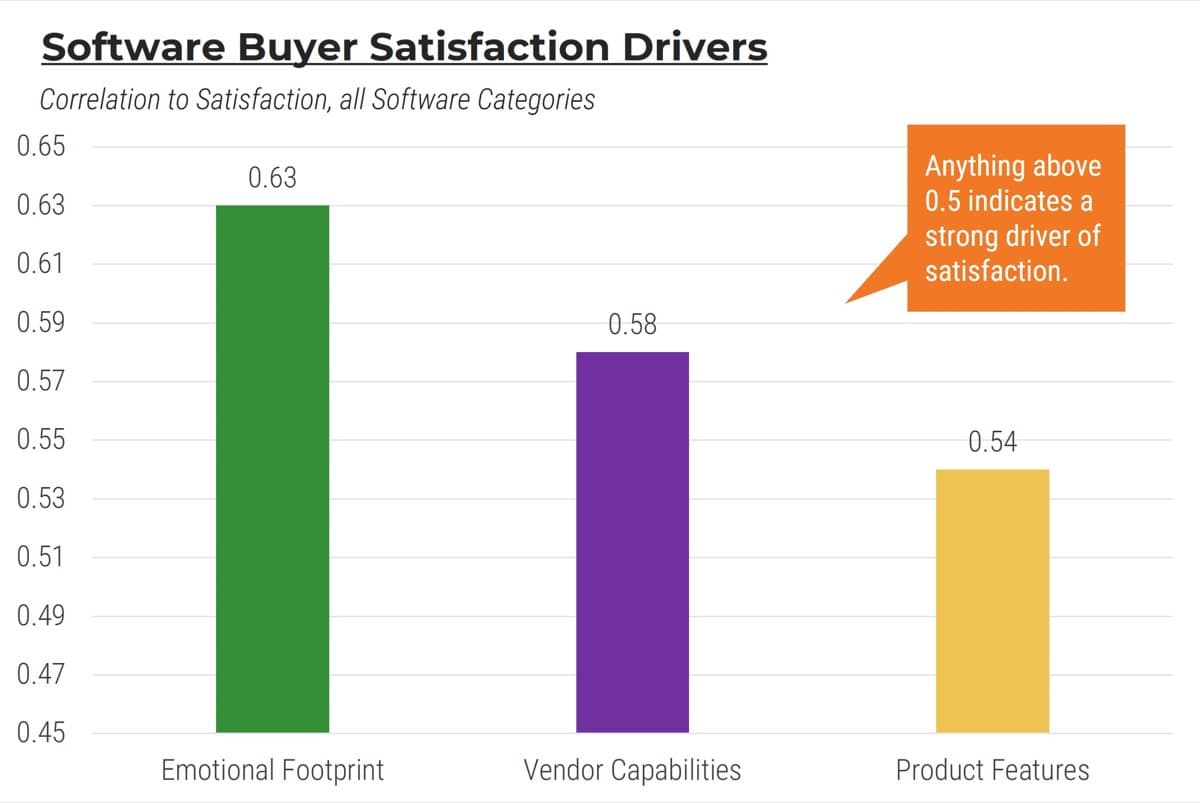
Source: SoftwareReviews buyer reviews (based on 82,560 unique reviews).
Driving deep satisfaction among software customers vs. surface-level measures is key
Vendor capabilities and product features correlate significantly to buyer satisfaction
Yet, it’s the emotional attributes – what we call the “Emotional Footprint”, that correlate more strongly
Business-Value Created and Emotional Attributes are what drives software customer satisfaction the most
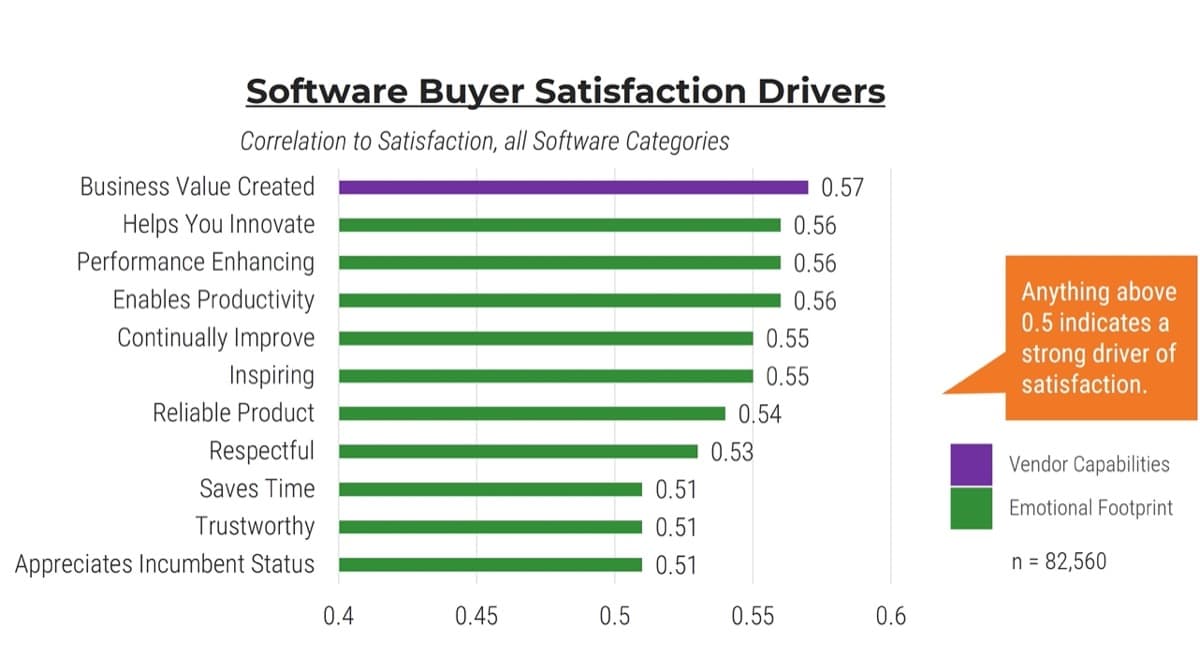
Software companies looking to improve customer satisfaction will focus on business value created and the Emotional Footprint attributes outlined here.
The essential ingredient is understanding how each is defined by your customers.
Leaders focus on driving improvements as described by customers.
SoftwareReviews Insight:
These true drivers of satisfaction should be considered in your customer satisfaction measurement and monitoring efforts. The experience customers have with your product and brand is what will differentiate your brand from competitors, and ultimately, power business growth. Talk to a SoftwareReviews Advisor to learn how users rate your product on these satisfaction drivers in the SoftwareReviews Emotional Footprint Report.
Benefits of Effective Customer Satisfaction Measurement
Our research provides Customer Success leaders with the following key benefits:
- Ability to know who is satisfied, dissatisfied, and why.
- Confidence in how to understand or uncover the factors behind customer satisfaction; understand and identify factors driving satisfaction, dissatisfaction.
- Ability to develop a clear plan for improving customer satisfaction.
- Knowledge of how to establish a repeatable process for customer satisfaction measurement and monitoring that allows for proactivity when declines in satisfaction are detected.
- Understanding of what metrics to use, how to measure them, and where to find the right information/data.
- Knowledge of where money, time, and other resources are needed most to drive tangible customer value.
“81% of organizations cite CX as a competitive differentiator. The top factor driving digital transformation is improving CX […] with companies reporting benefits associated with improving CX including:
- Increased customer loyalty (92%)
- An uplift in revenue (84%)
- Cost savings (79%).”
– Dan Cote, “Advocacy Blooms and Business Booms When Customers and Employees Engage”, Influitive, 2021
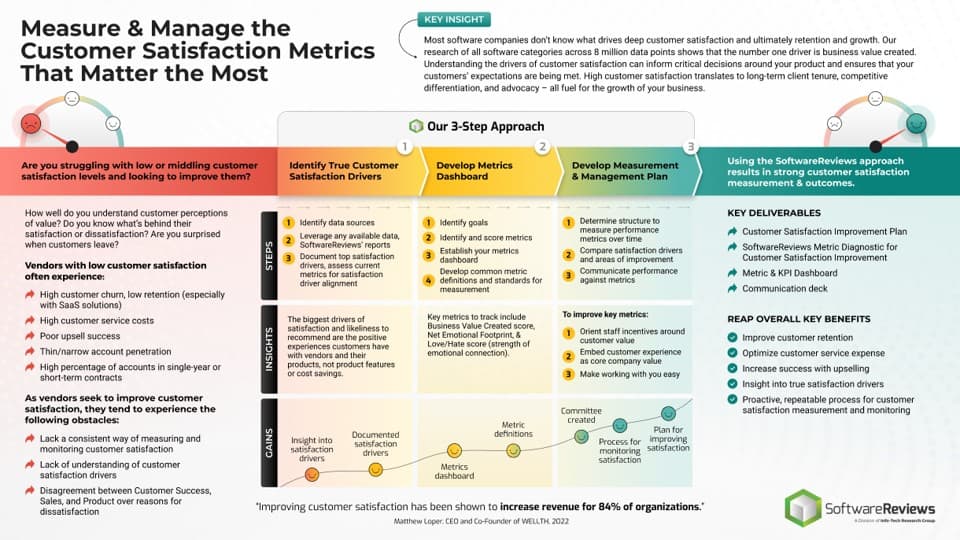
Who benefits from improving the measurement and monitoring of customer satisfaction?
This Research Is Designed for:
- Customer Success leaders and marketers who are:
- Responsible for understanding how to benchmark, measure, and understand customer satisfaction to improve satisfaction, NPS, and ROI.
- Looking to take a more proactive and structured approach to customer satisfaction measurement and monitoring.
- Looking for a more effective and accurate way to measure and understand how to improve customer satisfaction around products and services.
This Research Will Help You:
- Understand the factors driving satisfaction and dissatisfaction.
- Know which customers are satisfied/dissatisfied.
- Know where time, money, and resources are needed the most in order to improve or maintain satisfaction levels.
- Develop a formal plan to improve customer satisfaction.
- Establish a repeatable process for customer satisfaction measurement and monitoring that allows for proactivity when declines in satisfaction are detected.
This Research Will Also Assist:
- Customer Success Leaders, Marketing and Sales Directors and Managers, Product Marketing Managers, and Advocacy Managers/Coordinators who are responsible for:
- Product improvements and enhancements
- Customer service and onboarding
- Customer advocacy programs
- Referral/VoC programs
This Research Will Help Them:
- Coordinate and align on customer experience efforts and actions.
- Gather and make use of customer feedback to improve products, solutions, and services provided.
- Provide an amazing customer experience throughout the entirety of the customer journey.
SoftwareReviews’ methodology for measuring the customer satisfaction metrics that matter the most
1. Identify true customer satisfaction drivers |
2. Develop metrics dashboard |
3. Develop customer satisfaction measurement and management plan |
|
|---|---|---|---|
Phase Steps |
|
|
|
Phase Outcomes |
|
|
|
Insight summary
Understanding and measuring the true drivers of satisfaction enable the delivery of real customer value
All software companies measure satisfaction in some way, but many lack understanding of what’s truly driving customers to stay or leave. By understanding the true drivers of satisfaction, solution providers can measure and monitor satisfaction more effectively, pull actionable insights and feedback, and make changes to products and services that customers really care about and which will keep them coming back to you to have their needs met.
Positive experiences drive satisfaction more so than features and cost
According to our analysis of software buyer reviews data*, the biggest drivers of satisfaction and likeliness to recommend are the positive experiences customers have with vendors and their products. Customers want to feel that:
- Their productivity and performance is enhanced, and the vendor is helping them innovate and grow as a company.
- Their vendor inspires them and helps them to continually improve.
- They can rely on the vendor and the product they purchased.
- They are respected by the vendor.
- They can trust that the vendor will be on their side and save them time.
*8 million data points across all software categories
Measure Key Relationship KPIs to gauge satisfaction
Key metrics to track include the Business Value Created score, Net Emotional Footprint, and the Love/Hate score (the strength of emotional connection).
Orient the organization around customer experience excellence
- Arrange staff incentives around customer value instead of metrics that are unrelated to satisfaction.
- Embed customer experience as a core company value and integrate it into all functions.
- Make working with your organization easy and seamless for customers.
Have a designated committee for customer satisfaction measurement
Best in class organizations create customer satisfaction committees that meet regularly to measure and monitor customer satisfaction, resolve issues quickly, and work towards improved customer experience and profit outcomes.
Use metrics that align to top satisfaction drivers
This will give you a more accurate and fulsome view of customer satisfaction than standard satisfaction metrics alone will.
Guided Implementation
What is our GI on measuring and managing the customer satisfaction metrics that matter most?
Identify True Customer Satisfaction Drivers |
Develop Metrics Dashboard | Develop Customer Satisfaction Measurement and Management Plan |
|---|---|---|
Call #1: Discuss current pain points and barriers to successful customer satisfaction measurement, monitoring and maintenance. Plan next call – 1 week. Call #2: Discuss all available data, noting any gaps. Develop plan to fill gaps, discuss feasibility and timelines. Plan next call – 1 week. Call #3: Walk through SoftwareReviews reports to understand EF and satisfaction drivers. Plan next call – 3 days. Call #4: Segment customers and document key satisfaction drivers. Plan next call – 2 week. |
Call #5: Document business goals and align them to metrics. Plan next call – 1 week. Call #6: Complete the SoftwareReviews satisfaction measurement diagnostic. Plan next call – 3 days. Call #7: Score list of metrics that align to satisfaction drivers. Plan next call – 2 days. Call #8: Develop metrics dashboard and definitions. Plan next call – 2 weeks. Call #9: Finalize metrics dashboard and definitions. Plan next call – 1 week. |
Call #10: Discuss committee and determine governance. Plan next call – 2 weeks. Call #11: Map out gaps in satisfaction along customer journey as they relate to top satisfaction drivers. Plan next call –2 weeks. Call #12: Develop plan and roadmap for satisfaction improvement. Plan next call – 1 week. Call #13: Finalize plan and roadmap. Plan next call – 1 week. Call # 14: Review and coach on communication deck. |
A Guided Implementation (GI) is series of calls with a SoftwareReviews Advisory analyst to help implement our best practices in your organization.
For guidance on marketing applications, we can arrange a discussion with an Info-Tech analyst.
Your engagement managers will work with you to schedule analyst calls.
Software Reviews offers various levels of support to best suit your needs
DIY Toolkit |
Guided Implementation |
Workshop |
Consulting |
|---|---|---|---|
| “Our team has already made this critical project a priority, and we have the time and capability, but some guidance along the way would be helpful.” | “Our team knows that we need to fix a process, but we need assistance to determine where to focus. Some check-ins along the way would help keep us on track.” | “We need to hit the ground running and get this project kicked off immediately. Our team has the ability to take this over once we get a framework and strategy in place.” | “Our team does not have the time or the knowledge to take this project on. We need assistance through the entirety of this project.” |
| Included within Advisory Membership | Optional add-ons | ||
Bibliography
“Are you experienced?” Bain & Company, Apr. 2015. Accessed 6 June. 2022.
Brisco, Ken. “Measuring Customer Satisfaction and Why It’s So Important.” NICE, Feb. 2019. Accessed 6 June. 2022.
CMO.com Team. “The Customer Experience Management Mandate.” Adobe Experience Cloud Blog, July 2019. Accessed 14 June. 2022.
Cote, Dan. “Advocacy Blooms and Business Booms When Customers and Employees Engage.” Influitive, Dec. 2021. Accessed 15 June. 2022.
Fanderl, Harald and Perrey, Jesko. “Best of both worlds: Customer experience for more revenues and lower costs.” McKinsey & Company, Apr. 2014. Accessed 15 June. 2022.
Gallemard, Jeremy. “Why – And How – Should Customer Satisfaction Be Measured?” Smart Tribune, Feb. 2020. Accessed 6 June. 2022.
Kumar, Swagata. “Customer Success Statistics in 2021.” Customer Success Box, 2021. Accessed 17 June. 2022.
Lakshmiu Tatikonda, “The Hidden Costs of Customer Dissatisfaction”, Management Accounting Quarterly, vol. 14, no. 3, 2013, pp 38. Accessed 17 June. 2022.
Loper, Matthew. “Why ‘Customer Satisfaction’ Misses the Mark – And What to Measure Instead.” Newsweek, Jan. 2022. Accessed 16 June. 2022.
Maechler, Nicolas, et al. “Improving the business-to-business customer experience.” McKinsey & Company, Mar. 2016. Accessed 16 June.
“New Research from Dimension Data Reveals Uncomfortable CX Truths.” CISION PR Newswire, Apr. 2017. Accessed 7 June. 2022.
Sheth, Rohan. 75 Must-Know Customer Experience Statistics to move Your Business Forward in 2022.” SmartKarrot, Feb. 2022. Accessed 17 June. 2022.
Smith, Mercer. “111 Customer Service Statistics and Facts You Shouldn’t Ignore.” HelpScout, May 2022. Accessed 17 June. 2022.
“State of the Connected Customer.” Salesforce, 2020. Accessed 14 June. 2022
“The true value of customer experiences.” Deloitte, 2018. Accessed 15 June. 2022.
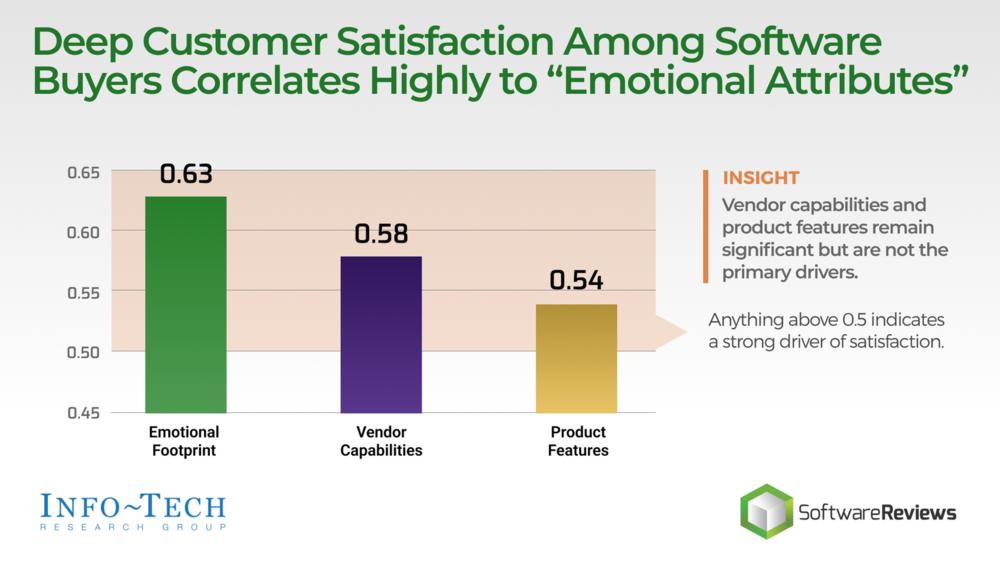
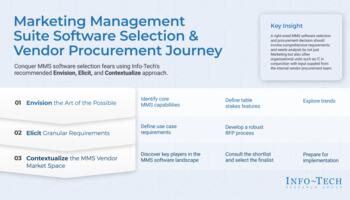 Marketing Management Suite Software Selection Guide
Marketing Management Suite Software Selection Guide
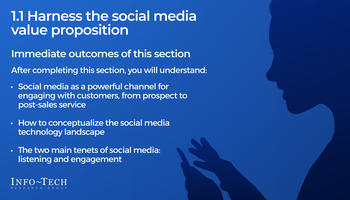 Social Media
Social Media
 Build IT Capabilities to Enable Digital Marketing Success
Build IT Capabilities to Enable Digital Marketing Success
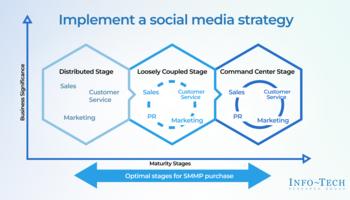 Select and Implement a Social Media Management Platform
Select and Implement a Social Media Management Platform
 Develop a Web Experience Management Strategy
Develop a Web Experience Management Strategy
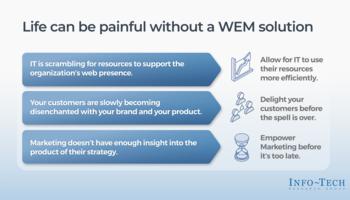 Select and Implement a Web Experience Management Solution
Select and Implement a Web Experience Management Solution
 Modernize Your Corporate Website to Drive Business Value
Modernize Your Corporate Website to Drive Business Value
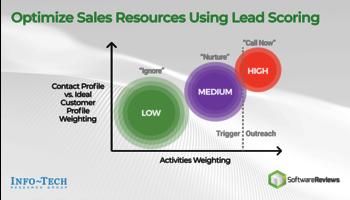 Optimize Lead Generation With Lead Scoring
Optimize Lead Generation With Lead Scoring
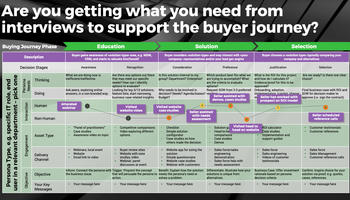 Create a Buyer Persona and Journey
Create a Buyer Persona and Journey
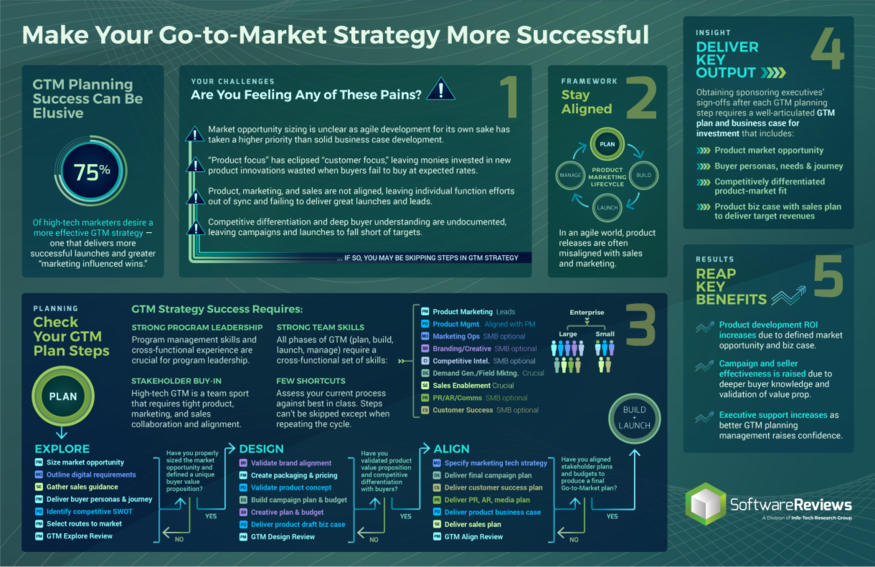 Build a More Effective Go-to-Market Strategy
Build a More Effective Go-to-Market Strategy
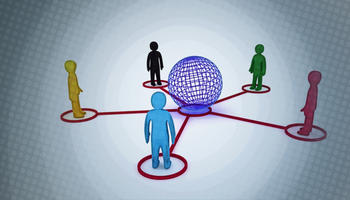 Implement a Social Media Program
Implement a Social Media Program
 Gain Real Insights with a Social Analytics Program
Gain Real Insights with a Social Analytics Program
 Optimize Social Media Strategy by Service
Optimize Social Media Strategy by Service
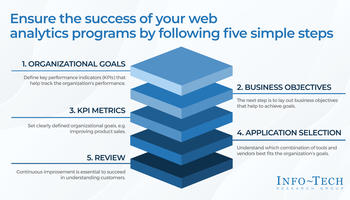 Leverage Web Analytics to Reinforce Your Web Experience Management Strategy
Leverage Web Analytics to Reinforce Your Web Experience Management Strategy
 2020 Applications Priorities Report
2020 Applications Priorities Report
_preview5b40.png) Diagnose Brand Health to Improve Business Growth
Diagnose Brand Health to Improve Business Growth
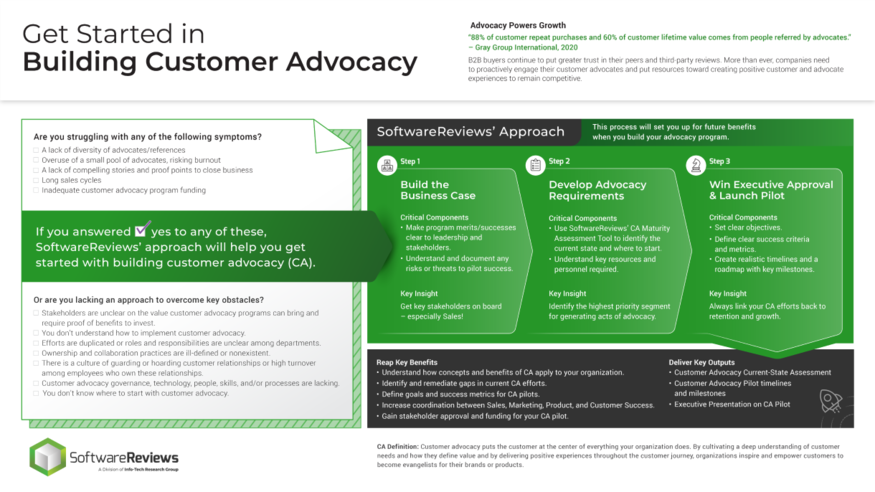 Get Started With Customer Advocacy
Get Started With Customer Advocacy
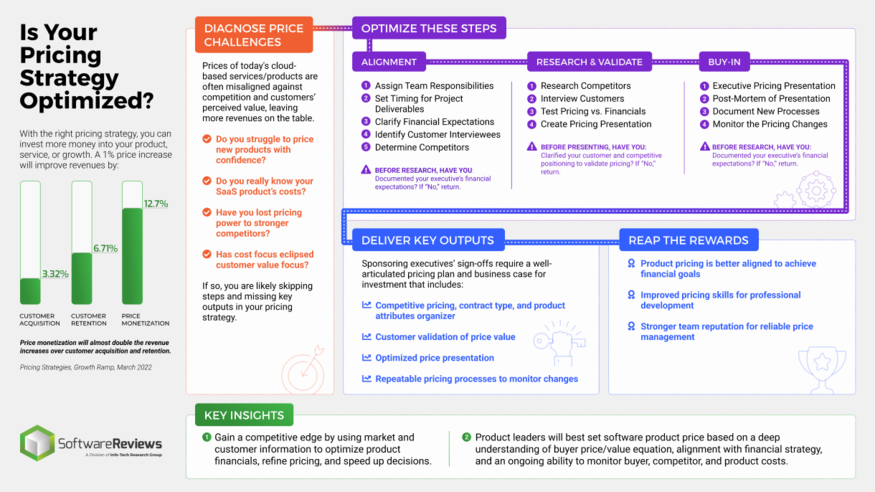 Optimize Software Pricing in a Volatile Competitive Market
Optimize Software Pricing in a Volatile Competitive Market
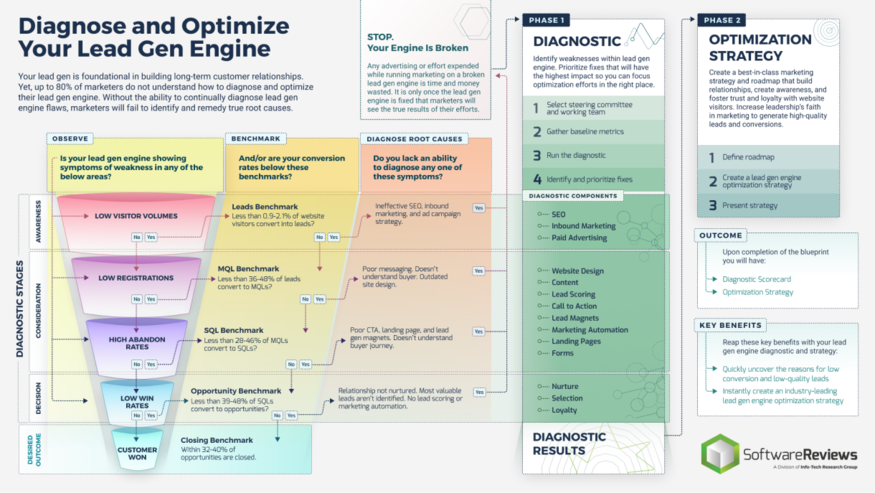 Diagnose and Optimize Your Lead Gen Engine
Diagnose and Optimize Your Lead Gen Engine
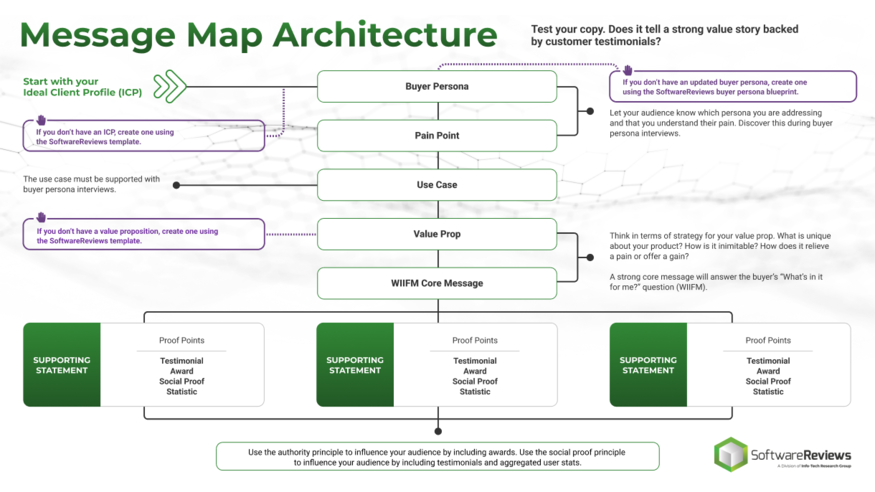 Develop the Right Message to Engage Buyers
Develop the Right Message to Engage Buyers
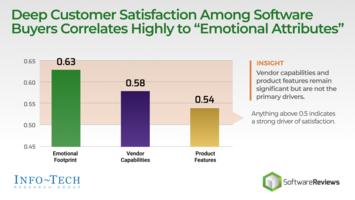 Measure and Manage Customer Satisfaction Metrics That Matter the Most
Measure and Manage Customer Satisfaction Metrics That Matter the Most
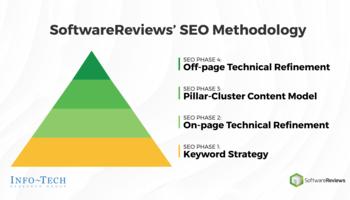 Create an Effective SEO Keyword Strategy
Create an Effective SEO Keyword Strategy
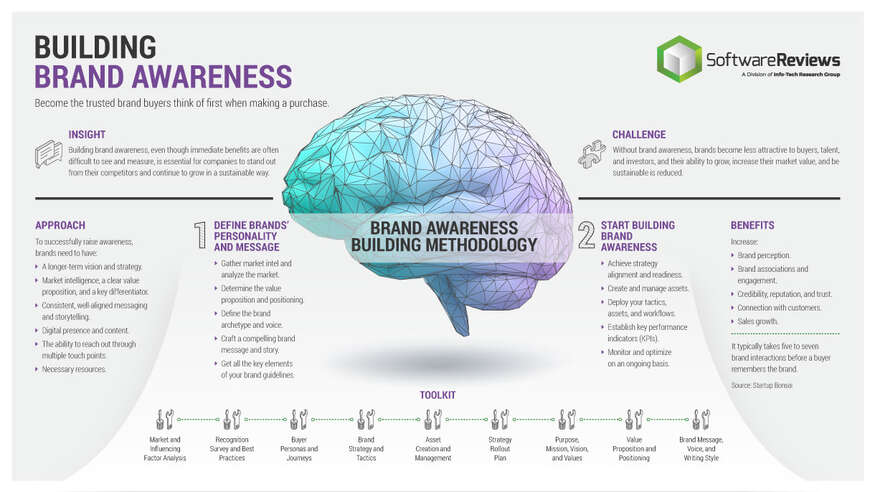 Accelerate Business Growth and Valuation by Building Brand Awareness
Accelerate Business Growth and Valuation by Building Brand Awareness
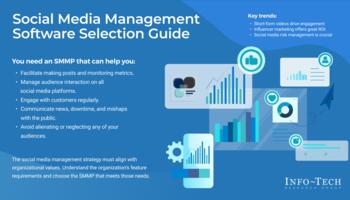 Social Media Management Software Selection Guide
Social Media Management Software Selection Guide
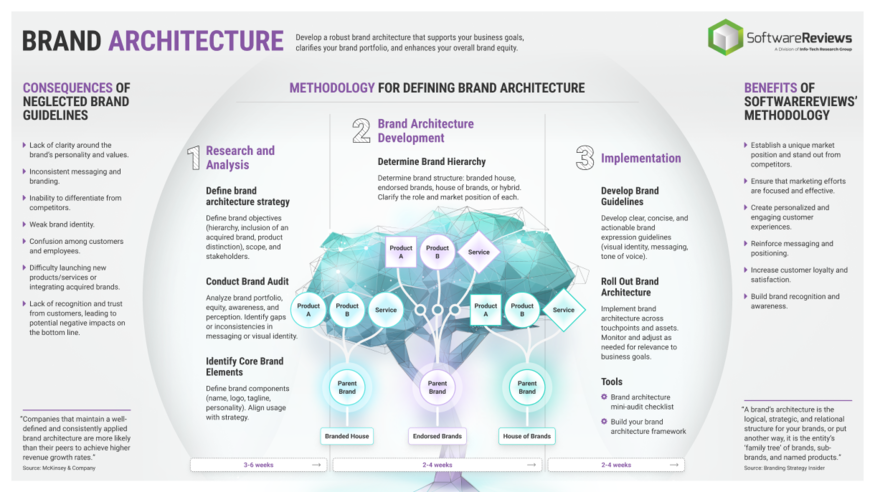 Build a More Effective Brand Architecture
Build a More Effective Brand Architecture
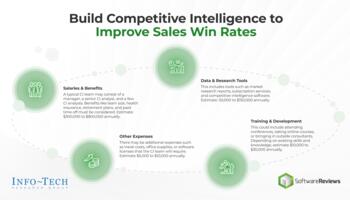 Build Competitive Intelligence to Improve Sales Win Rates
Build Competitive Intelligence to Improve Sales Win Rates
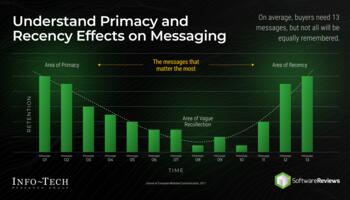 Create Assets to Accelerate the Buyer Journey
Create Assets to Accelerate the Buyer Journey
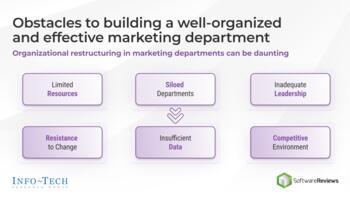 Scale Your Marketing Department
Scale Your Marketing Department
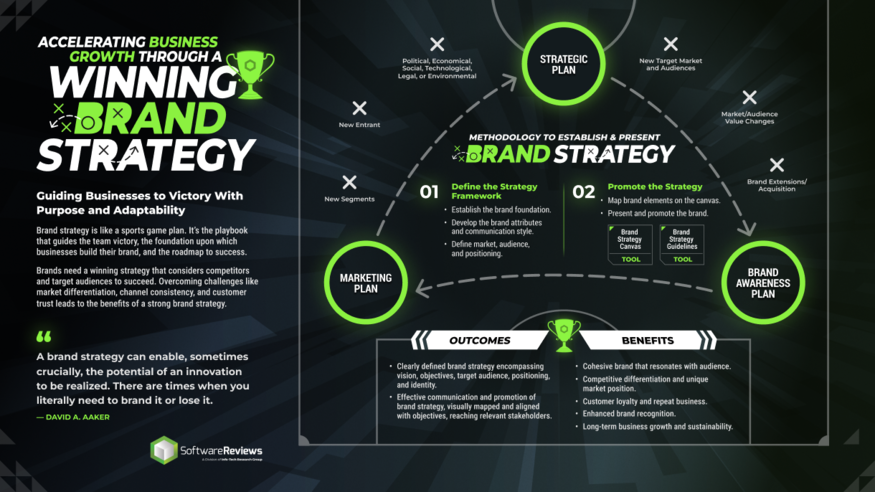 Brand Strategy: Establish and Cultivate a Flourishing Brand
Brand Strategy: Establish and Cultivate a Flourishing Brand
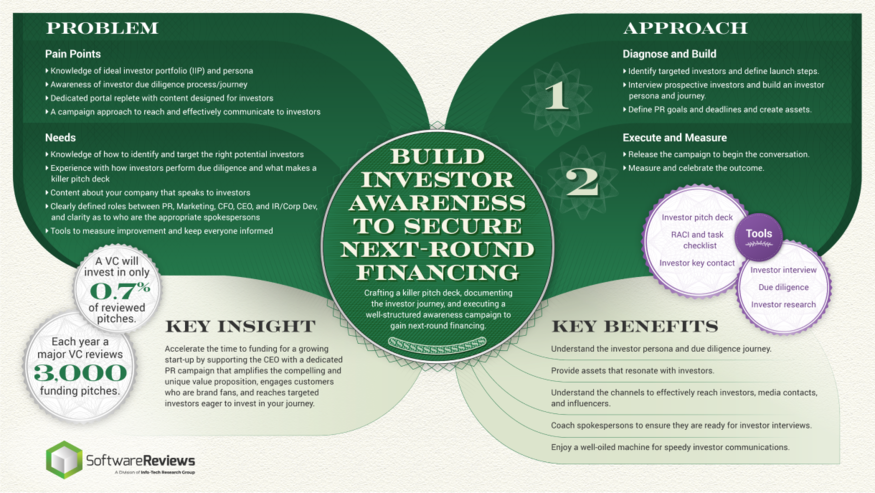 Build Investor Awareness to Secure Next-Round Financing
Build Investor Awareness to Secure Next-Round Financing
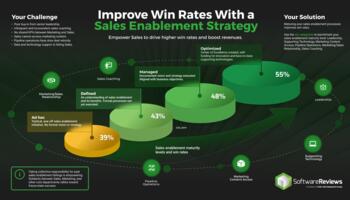 Improve Win Rates With a Sales Enablement Strategy
Improve Win Rates With a Sales Enablement Strategy
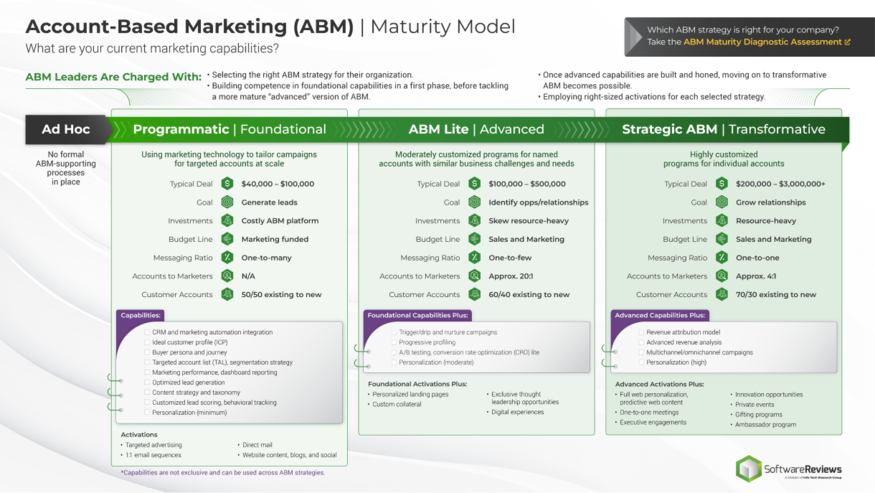 Build Your Account-Based Marketing Strategy
Build Your Account-Based Marketing Strategy
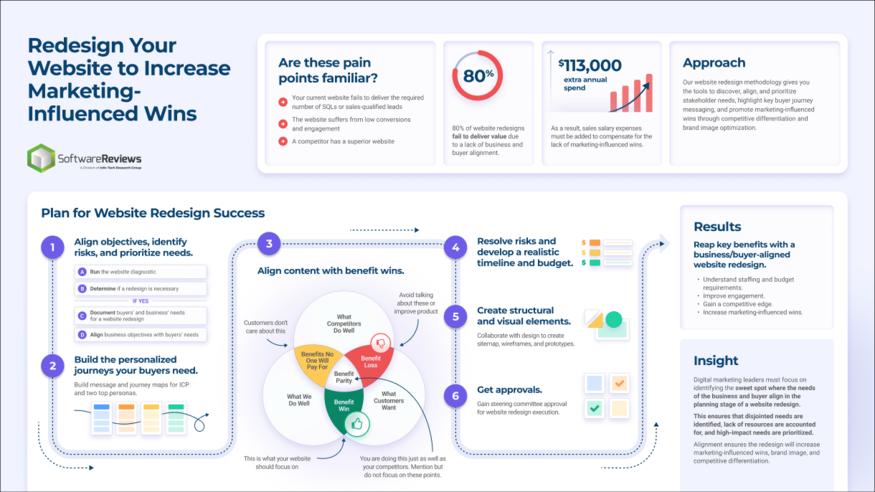 Redesign Your Website to Increase Marketing-Influenced Wins
Redesign Your Website to Increase Marketing-Influenced Wins
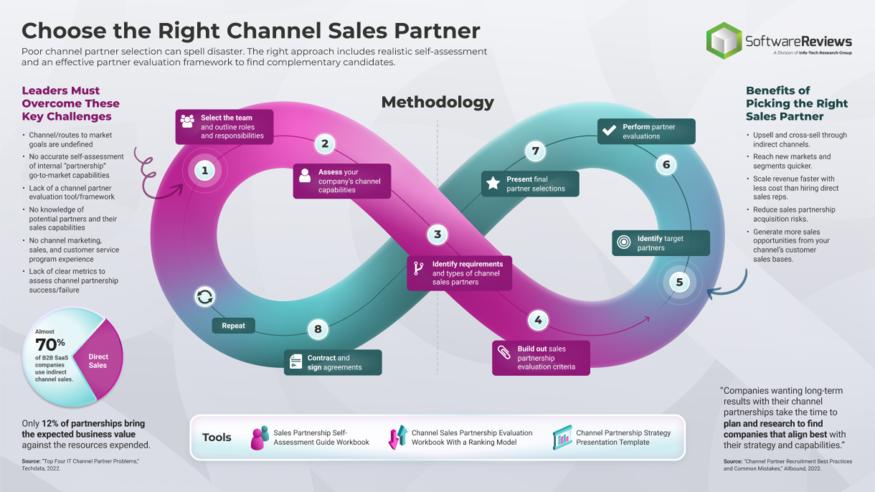 Choose the Right Channel Sales Partner
Choose the Right Channel Sales Partner
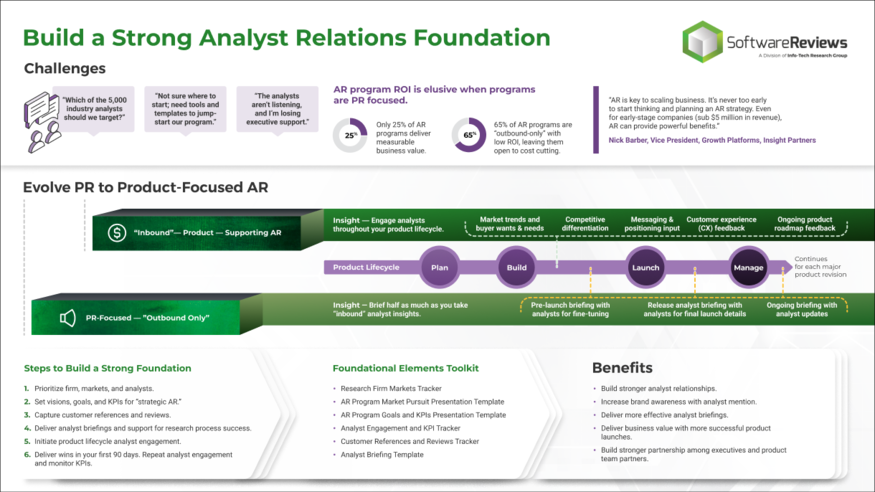 Build a Strong Analyst Relations Foundation
Build a Strong Analyst Relations Foundation
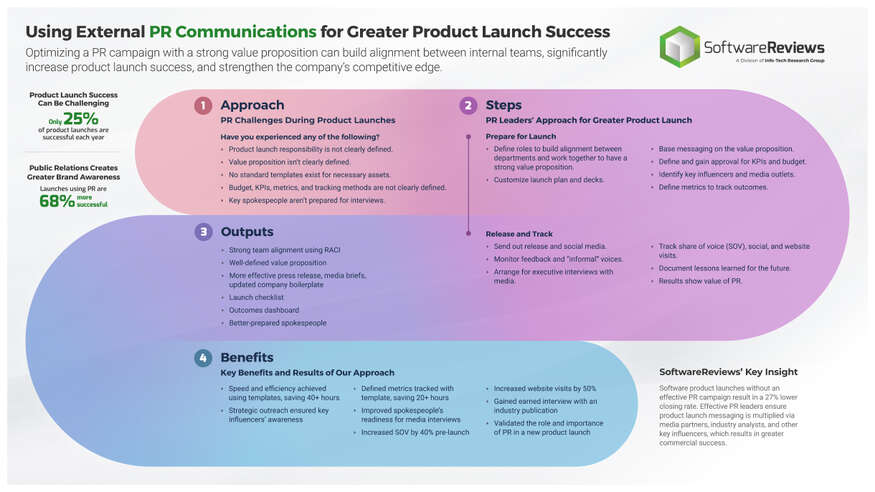 Improve External PR Communications for Greater Product Launch Success
Improve External PR Communications for Greater Product Launch Success
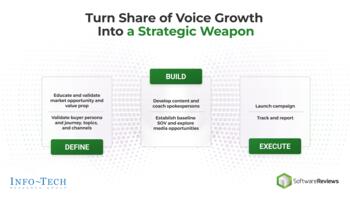 Turn Share of Voice Growth Into a Strategic Weapon
Turn Share of Voice Growth Into a Strategic Weapon
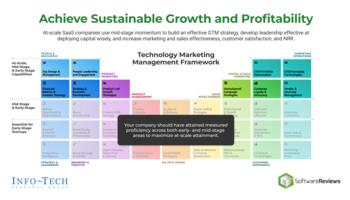 Optimize the Right Metrics to Scale Your Business
Optimize the Right Metrics to Scale Your Business